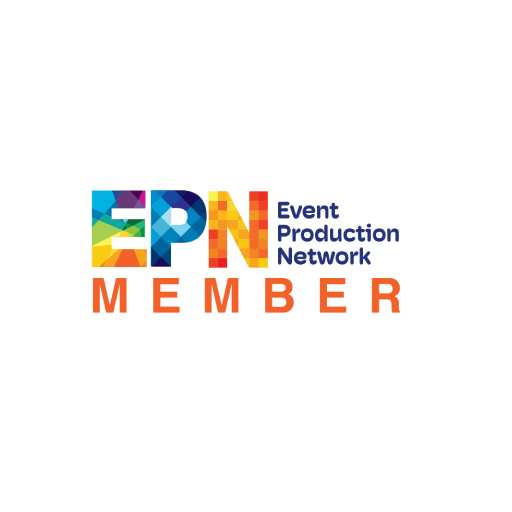Why audio visual charlotte nc is a smart choice for corporate events
Understanding the Inclusion of Audio Visual Modern technology in Today's Educational Environments
The combination of audio-visual modern technology in educational setups has actually changed the teaching and discovering process. Educators now have accessibility to tools that provide to numerous discovering designs, enhancing trainee involvement and partnership. Nevertheless, the consolidation of these innovations presents both opportunities and challenges. Understanding how to effectively implement these tools is important. What strategies can teachers employ to maximize the benefits of audio-visual technology in their classrooms?
The Evolution of Audio-Visual Innovation in Education And Learning
As educational demands evolved over the decades, audio-visual modern technology underwent substantial transformations that improved the knowing atmosphere. Tools such as film projectors and slide programs were the key ways of integrating aesthetic aspects right into class. These early modern technologies given teachers with the capability to present info dynamically, yet they were restricted in access and interactivity.
With the arrival of video cassette recorders in the 1970s, classrooms began to include documented lessons, broadening the range of educational resources. The intro of desktop computers in the 1980s more reinvented this landscape, permitting the creation of multimedia presentations and interactive understanding experiences.
The surge of the web in the 1990s noted a zero hour, enabling real-time access to a wealth of audio-visual materials. Today, digital devices such as interactive whiteboards and on the internet discovering systems remain to improve the instructional experience, fostering involvement and collaboration among students.
Advantages of Audio-Visual Equipment for Diverse Learning Styles
Audio-visual devices play an essential role in dealing with diverse discovering designs by boosting visual discovering and boosting auditory engagement. By including pictures, video clips, and sound, these modern technologies develop an even more inclusive instructional setting. This complex strategy allows instructors to address the diverse choices and demands of students effectively.
Enhancing Visual Knowing
Interaction in the learning procedure is markedly boosted through using audio-visual tools, accommodating different discovering styles. These tools, such as video clips, infographics, and interactive discussions, supply visual stimuli that help comprehension and retention. Aesthetic learners, particularly, gain from the unification of images and animations, which can simplify complicated ideas and improve understanding. In addition, audio-visual sources can illustrate real-world applications, making finding out more relevant and interesting. By integrating shade, activity, and noise, educators can develop a dynamic discovering environment that catches trainees' interest and cultivates deeper cognitive links. Ultimately, the strategic use of audio-visual innovation not just sustains aesthetic learning however also enhances the overall educational experience for diverse students.
Improving Auditory Involvement
A considerable benefit of integrating audio-visual tools in education is their capability to enhance auditory engagement among pupils. These tools, which include multimedia discussions, podcasts, and interactive sound aspects, satisfy various learning designs, particularly benefiting auditory learners (audio visual charlotte nc). By incorporating sound and narration, instructors can develop immersive experiences that record pupils' focus and enhance comprehension. This interaction is important, as it promotes a much deeper understanding of the material and promotes retention. Furthermore, audio-visual devices can promote collaborative knowing atmospheres, urging pupils to join conversations and share their understandings. Inevitably, the consolidation of audio-visual innovation not only supports acoustic engagement but additionally improves the general educational experience, making discovering more vibrant and efficient for all pupils
Enhancing Interaction Through Interactive Understanding

Additionally, gamification elements, such as tests and simulations, can improve inspiration and retention, making discovering more pleasurable and reliable. These strategies not just boost cognitive involvement but additionally deal with varied learning designs, making certain that all trainees can take part meaningfully. Consequently, interactive learning settings cultivate a sense of area and belonging, eventually leading to enhanced academic end results. Through the integration of audio visual modern technology, instructors can transform traditional classrooms right into dynamic rooms where students thrive and actively form their academic journeys.
Connecting Theory and Exercise With Multimedia Resources
Multimedia resources work as an essential web link between theoretical ideas and practical application in educational settings. By boosting engagement, facilitating collective knowing experiences, and supporting diverse understanding styles, these devices produce a much more comprehensive and vibrant knowing environment - audio visual charlotte nc. This strategy not just promotes deeper understanding however additionally prepares students for real-world difficulties

Enhancing Engagement Via Multimedia
Interaction in instructional settings greatly raises when trainers incorporate multimedia resources into their mentor approaches. Using video clips, podcasts, and interactive presentations improves the discovering experience, enabling students to connect with the material on several levels. Multimedia resources deal with various learning styles, offering aesthetic, acoustic, and kinesthetic stimuli that can hold students' attention a lot more successfully than standard lecture approaches. Additionally, these sources can simplify intricate principles, making them a lot more easily accessible and unforgettable. By integrating multimedia, educators can develop a vibrant classroom setting that promotes inquisitiveness and inspires learners. Ultimately, the strategic usage of audio-visual modern technology serves to link the gap between academic knowledge and practical application, enhancing the instructional experience for both teachers and students.
Assisting In Collaborative Knowing Experiences
Countless researches show that collaborative understanding experiences substantially improve student end results when incorporated with multimedia sources. Multimedia devices help with communication amongst trainees, enabling them to participate in problem-solving and crucial thinking collectively. By making use of video conferencing, joint platforms, and interactive presentations, teachers produce settings for teamwork and shared learning. These modern technologies allow students to connect their ideas properly and obtain instant responses, fostering a much deeper understanding of the topic. Additionally, multimedia sources can provide complex concepts in even more absorbable formats, promoting conversation and cooperation. Because of this, the mix of collective knowing and audio-visual innovation not just enriches the academic experience however additionally prepares pupils for real-world team effort characteristics, emphasizing the importance of collaboration and collective expertise building.
Supporting Diverse Learning Styles
While conventional training methods frequently satisfy a restricted series of learning preferences, the combination of audio-visual innovation uses a much more comprehensive method to education and learning. By using multimedia resources such as video clips, interactive simulations, and electronic presentations, educators can address various learning designs, including aesthetic, auditory, and kinesthetic. This versatility enables for set apart instruction, allowing students to involve with material in manner ins which reverberate with their specific preferences. Additionally, audio-visual devices can help with deeper understanding by providing multiple depictions of complex ideas. Consequently, trainees who might fight with conventional approaches can discover alternate pathways to success, cultivating an extra fair discovering environment that supports academic achievement for all learners.
Challenges in Applying Audio-Visual Innovation
Audio-visual technology holds fantastic assurance for boosting instructional experiences, its implementation typically comes across significant difficulties. One main problem is the economic worry connected with investing in and maintaining such devices, which can stress spending plans, particularly in underfunded institutions. Furthermore, poor training for educators can impede effective assimilation, leaving them ill-prepared to use the innovation totally. Technical concerns, such as software program malfunctions and compatibility problems, might also interfere with lessons and irritate both educators and trainees. Furthermore, differing degrees of pupil accessibility to technology outside the class can create disparities in discovering possibilities. The possibility for over-reliance on technology may detract from vital mentor techniques, ultimately limiting the educational experience. Addressing these difficulties calls for a detailed technique, including sufficient financing, expert advancement, and equitable access to resources, to ensure that audio-visual modern technology can be leveraged efficiently in today's academic settings.
Ideal Practices for Integrating Innovation in the Class

Additionally, fostering an interactive environment via joint devices encourages trainee interaction and participation. Using diverse audio-visual resources provides to different discovering designs, fitting visual, acoustic, and kinesthetic learners. Routinely evaluating the influence of technology on pupil knowing aids educators improve their approaches and adapt to transforming requirements. Including trainees in the option of technology advertises ownership and inspiration. By adhering to these ideal practices, teachers can create a dynamic class atmosphere that effectively incorporates technology and improves the instructional experience for all trainees.
The Future of Audio-Visual Modern Technology in Education And Learning
As classrooms increasingly embrace innovation, the landscape of audio-visual tools in education and learning remains to advance (audio visual charlotte nc). Future developments are anticipated to concentrate on better interactivity and personalization, enabling teachers to customize finding out experiences to individual trainee requirements. Innovations such as augmented reality (AR) and virtual reality (VIRTUAL REALITY) will likely provide immersive learning atmospheres, boosting student interaction and understanding
Moreover, expert system (AI) is positioned to play a substantial function in audio-visual innovation by providing real-time responses and flexible understanding pathways. This combination might aid educators identify and address pupil obstacles better. Cloud-based systems will certainly help with simpler access to sources and collaboration among pupils and teachers, no matter of area.
Along with these technological advancements, specialist development for instructors will be essential, guaranteeing they are equipped to make use of these tools successfully. Overall, the future of audio-visual modern technology in education assures to produce more vibrant, comprehensive, and impactful learning experiences.
Regularly Asked Questions
How Can Educators Choose the Right Audio-Visual Devices for Their Class?
Selecting appropriate audio-visual tools calls for instructors to examine their academic objectives, take into consideration trainee needs, review offered innovation, and look for recommendations from peers or professionals, making certain devices effectively improve learning and involvement within their specific classroom environment.
What Budget plan Considerations Are There for Applying Audio-Visual Modern Technology?
Budget factors to consider for applying audio-visual modern technology include first purchase expenses, maintenance expenditures, training for personnel, and potential software licensing fees. Additionally, long-term financial investment in updates and replacements need to additionally be factored into financial planning.
Are There Details Training Resources for Educators on Audio-Visual Devices?
Many organizations offer training resources for instructors on audio-visual devices, consisting of on-line courses, workshops, and educational guides. These resources aim to improve instructors' skills and confidence in effectively incorporating technology into their training techniques.
Just how Do We Measure the Performance of Audio-Visual Innovation in Discovering?
Determining the effectiveness of audio-visual innovation in discovering entails examining pupil interaction, understanding, retention prices, and total scholastic performance. Studies, assessments, and observational researches can offer beneficial insights right into its influence on educational results.
What Prevail False Impressions Regarding Audio-Visual Innovation in Education?
Typical misconceptions about audio-visual innovation in education and learning consist of the belief that it ensures involvement and learning end click here results, as well as the assumption that all trainees profit equally, overlooking individual understanding choices and requirements.